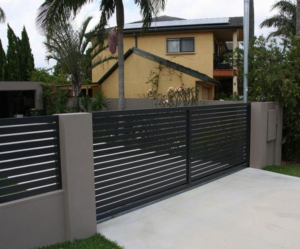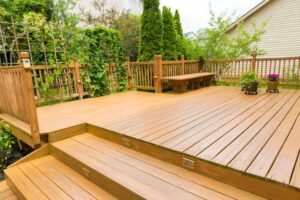Concrete repair is not only necessary to maintain a structure’s safety, but also to ensure it continues to meet its design load capacity. Repair and restoration services focus on restoring damaged concrete structures without replacing them, saving money and time.

Stains are generally simple to remove using various methods depending on the type of stain (like old oil stains). Bonding agents can be applied directly to the surface. To learn more, visit https://www.concreterepaireauclaire.com/.
A professional will identify the type of crack and its cause and recommend the appropriate concrete repair solution. Concrete cracks can be structural, requiring a foundation replacement or beam repairs, or non-structural such as settling or poorly mixed concrete. The cause of the crack will also determine how the concrete is repaired – for example, a surface crack caused by freeze/thaw cycles will need to be sealed with a flexible sealant, while surface cracks resulting from foot traffic or wear and tear may simply need to be levelled with a trowel.
Hairline cracks in new concrete are normal and a result of the water that was poured into the concrete mix evaporating and leaving voids. These types of cracks do not impact the strength of the concrete and are typically not a cause for concern if they are not widening or extending beyond the edges of a slab. Cracks that are wider or extending further from the edge of a slab are more serious and will need to be addressed as they can act as a passageway for moisture, oxygen and salts that can corrode the reinforcing steel and eventually lead to spalling.
To seal cracks less than 1/8 inch in width, you can use a flexible concrete filler like this from Bluestar. The thin spout on the bottle allows you to carefully squeeze the filler into the crack and then smooth it out with a putty knife for a neat finish. The filler seals the crack once dry, so moisture can’t continue to enlarge the gap and it is flexible enough to give slightly with ground movement or expansion/contraction of the concrete to resist splitting, lifting or cracking.
For larger cracks that could be a hazard to safety or a passageway for moisture, it is a good idea to use an epoxy or polyurethane coating that is strong, durable and can withstand chemical attack. These products can be injected into the crack using an epoxy injection system, which provides an effective and permanent repair. For extensive damage from tree roots, a more comprehensive root barrier or removal may be required.
Structural Damage
Concrete is an incredibly versatile building material, but that doesn’t mean it’s indestructible. When cracks form, the resulting stress can cause structural damage that weakens the entire structure and potentially render it unsafe for use. This type of damage requires an expert in concrete repair to resolve.
Concrete repairs can be undertaken using a variety of techniques, from dry packing to conventional placement. In general, the repair mix should be of similar compressive strength to the existing concrete and should have a low water:cement ratio in order to minimize shrinkage cracking. The addition of styrene butadiene rubber (SBR) to the mix is also beneficial, as it reduces the water:cement ratio and improves workability.
In the case of historic concrete structures, like-for-like repair materials are typically preferred in order to maintain the overall fabric and appearance of the original structure. However, this should always be based on an informed decision, as modern ‘concrete repair mortars’ can perform just as well and are more cost-effective in many instances.
The concrete in historic buildings and structures will often have been subject to a number of weathering processes, such as carbonation and sulfation. The results of this can be seen as a slight darkening of the surface of the concrete and these effects can be duplicated through the use of surface treatments, such as live yoghurt or cow dung.
The addition of pre-stressing steel can also help to increase the strength of concrete repairs, especially when they are made to large sections of honeycombing concrete. This method is commonly used to reinforce concrete columns, beams and piers.
During the course of any concrete restoration project, it’s essential that all factors causing cracking are identified and addressed in the repair design. This is so that the underlying causes of the damage are resolved, which will prevent the issues from reoccurring in future. If you’re looking for a concrete repair company that will take the time to thoroughly assess your concrete structure and provide the best repair solution, contact the experts at CMR today. We specialize in the resurfacing and repair of commercial and residential concrete, including demolition and excavation services.
Loose Joints
Concrete expansion joints are designed to expand and contract with temperature changes. Unstable concrete around these expansion joints can be a safety hazard for pedestrians and drivers. Loose expansion joints can also cause concrete damage and need to be repaired by experienced professionals.
Identifying the exact type of concrete damage is the first step in any concrete repair project. Plastic shrinkage cracks, hairline cracks, and spalling of slab edges are common warehouse concrete damage problems that can be caused by a variety of issues. Fortunately, these cracks can be easily repaired with the right products.
To repair concrete expansion joints, remove the old port system and clean the inside of the joint with a stiff brush. Thoroughly flush the joint with water to ensure it is free of debris and contaminants. Wedging activated oakum rope into the concrete expansion joint fills it with a material that can expand and contract without causing damage to the concrete surface. Then, a chemical grout is injected into the port holes. After injection, hand work the activated oakum to achieve a profile that is flush with the face of the joint. The cured chemical grout is a strong sealant that will help prevent water penetration and dirt and debris build up.
Another solution is to use a moisture insensitive epoxy to seal the expansion joints. A product like POLYFLEX works well for both masonry expansion joints and saw cut control joints. It provides a strong seal and resists traffic and weather damage to the deteriorated concrete joints.
If you have concrete damage that is sinking or rocking, it is likely that the soils and subbase are unstable. This is a more serious issue that can lead to structural failure in the concrete structure.
Typically, this problem is the result of poor slab construction or improper usage of the slab and is most often caused by unfilled control joints. These unfilled joints allow hard, wheeled traffic to run over them and eventually chip away or break them apart. A concrete repair contractor should inspect the slab and subbase to determine what the underlying cause of this issue is and recommend the appropriate solution.
Sealants
Sealants help concrete resist cracks, spalling, deterioration, weathering and water penetration. They’re often used to protect concrete sidewalks, walls and floors in homes and businesses. When gaps in concrete occur, it can create tripping hazards for your family and guests, and they can even damage your car tires by causing them to wear down. Concrete sealants keep your family safe by filling in these unsightly gaps and preventing them from becoming worse.
Concrete sealants come in a variety of forms and formulas. They can be water-based or solvent-based and may require prepping the surface before application. Some sealers are able to penetrate the concrete surface while others form a coating over the top of the concrete. For the best results, choose a water-based product as it will leave less of a film on the concrete and be more easily removed for recoating in the future.
Penetrating sealants are the most common and affordable concrete repair products. They absorb into the concrete and react with the chemicals to stabilize and protect the concrete. This type of sealant does not change the appearance of the concrete and only requires reapplication every few years.
For joints that move, gray butyl caulk is a good choice because it can accommodate the cyclic movement of construction materials and prevent leaks and failures. It’s available at most big box stores and is easy to apply if you follow the instructions carefully.








